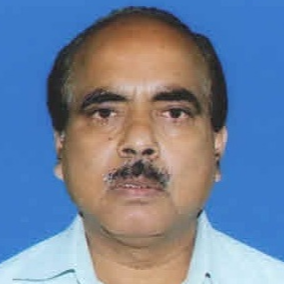
S.M.K. Quadri
Work place: Department of Computer Science, Faculty of Computer Science, University of Kashmir, Srinagar, India
E-mail: quadrismk@hotmail.com
Website:
Research Interests: Software Engineering, Pattern Recognition, Solid Modeling, Programming Language Theory, Comparative Programming Language Analysis
Biography
Prof. (Dr.) S.M.K. Quadri is working as Head, Department of Computer Science, University of Kashmir, Srinagar, J&K, India and Director, Directorate of Information Technology & Support System, University of Kashmir, Srinagar, J&K, India. His research areas include Software Reliability, Programming Language, Simulation and Modeling, Software Engineering & Pattern Recognition. He received his M.Sc in Statistics and PG Diploma in Computer Programming, both from Aligarh Muslim University, India. He also received his M.Tech from Indian School of Mines, Dhanbad and his Ph. D (Computer Science) from University of Kashmir, J&K India.
Author Articles
Genetic Algorithm for Biomarker Search Problem and Class Prediction
By Shabia Shabir Khan S.M.K. Quadri M.A. Peer
DOI: https://doi.org/10.5815/ijisa.2016.09.06, Pub. Date: 8 Sep. 2016
In the field of optimization, Genetic Algorithm that incorporates the process of evolution plays an important role in finding the best solution to a problem. One of the main issues that arise in the medical field is to search a finite number of factors or features that actually affect or predict the survival of the patients especially with poor prognosis disease, thus helping them in early diagnosis. This paper discusses the various steps that are performed in genetic algorithm and how it is going to help in extracting knowledge out of high dimensional medical dataset. The more the attributes or features, the more difficult it is to correctly predict the class of that sample or instance. This is because of inefficient, useless, noisy attributes in the dataset. So, here the main aim is to search the strong features or genes that can strongly predict the class of subject (patient) i.e. healthy or cancerous and thus help in early detection and treatment.
[...] Read more.Imaging Techniques for Cancer Diagnosis and Scope for Enhancement
By Showkat Hassan Malik Tariq Ahmad Lone S.M.K. Quadri
DOI: https://doi.org/10.5815/ijigsp.2016.05.08, Pub. Date: 8 May 2016
Imaging techniques are used to create images of structure, function and pathology of human body organs for cancer diagnosis. Various imaging techniques like X-ray, Ultra-Sonography (US), Positron Emission Tomography (PET), Ultrasound, MRI etc. are used for cancer diagnosis. These imaging techniques have gone through Lot of advancements during lost few years. These techniques vary in the technology and application. Various artifacts exist in these imaging techniques and images produced by theses imaging techniques. These artifacts can be exploited to enhance the imaging technique and the images produced by them.
[...] Read more.Density Based Script Identification of a Multilingual Document Image
By Rumaan Bashir S.M.K. Quadri
DOI: https://doi.org/10.5815/ijigsp.2015.02.02, Pub. Date: 8 Jan. 2015
Automatic Pattern Recognition field has witnessed enormous growth in the past few decades. Being an essential element of Pattern Recognition, Document Image Analysis is the procedure of analyzing a document image with the intention of working out the contents so that they can be manipulated as per the requirements at various levels. It involves various procedures like document classification, organizing, conversion, identification and many more. Since a document chiefly contains text, Script Identification has grown to be a very important area of this field. A Script comprises the text of a document or a manuscript. It is a scheme of written characters and symbols used to write a particular language. Languages are written using scripts, but script itself is made up of symbols. Every language has its own set of symbols used for writing it. Sometimes different languages are written using the same script, but with marginal modification. Script Identification has been performed for unilingual, bilingual and multilingual document images. But, negligible work has been reported for Kashmiri script. In this paper, we are analyzing and experimentally testing statistical approach for identification of Kashmiri script in a document image along with Roman, Devanagari & Urdu scripts. The identification is performed on offline machine-printed scripts and yields promising results.
[...] Read more.Other Articles
Subscribe to receive issue release notifications and newsletters from MECS Press journals